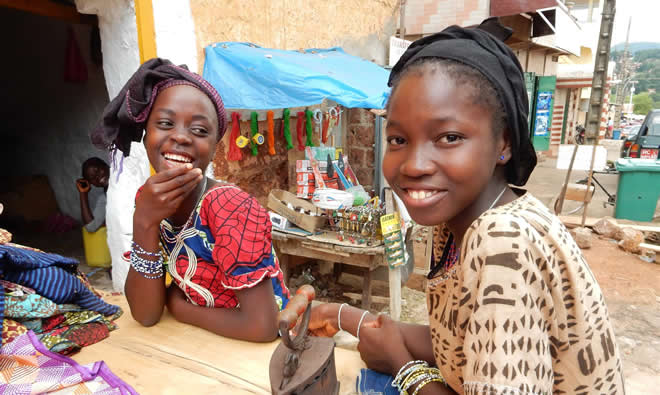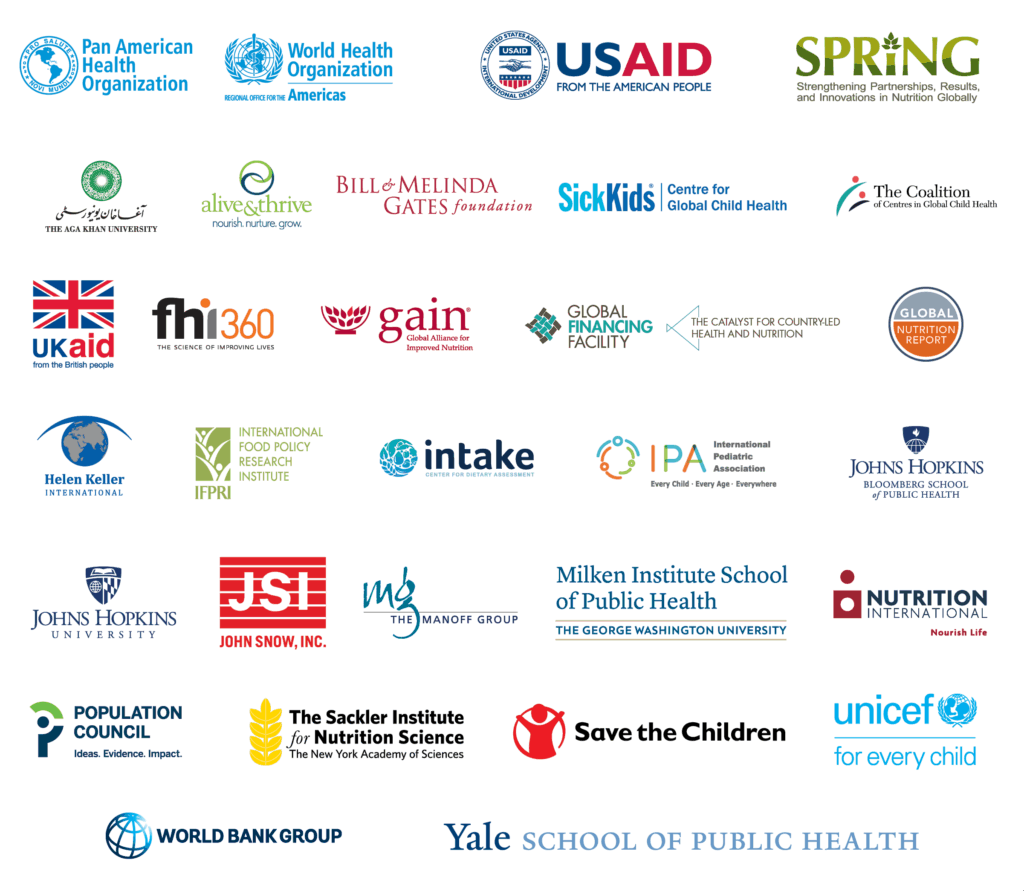The nutrition of the world’s estimated 1.2 billion adolescents (10–19 years old) will have a profound impact on their current and future health and wellbeing, that of their children, and society as a whole. Through the promotion of healthy diet and eating practices during adolescence, we have the potential to mitigate nutritional deficits generated during the first decade of life, break intergenerational cycles of malnutrition, and limit the epidemic of obesity and noncommunicable diseases (NCD) in adulthood.

However, quality data on boys’ and girls’ nutrition during this critical adolescent period is scarce, as is evidence of the effectiveness of nutrition policies and programs for this population.
The 10 commitments of the UN Decade of Action on Nutrition (2016–2025) call for countries to ensure healthy diets throughout the life course.
This must include adolescents.
To define key evidence and implementation gaps, prioritize future research, and propose next steps to move the adolescent nutrition agenda forward, a Stakeholders Consultation on Adolescent Girls’ Nutrition: Evidence, Guidance, and Gaps was organized in October of 2017, co-hosted by the United States Agency for International Development (USAID); the USAID-funded Strengthening Partnerships, Results, and Innovations in Nutrition Globally (SPRING) project; and the Pan American Health Organization (PAHO). More than 40 global experts, representing academic and research institutions, nongovernmental organizations, UNICEF, the World Health Organization (WHO), and several donor agencies, gathered at PAHO headquarters in Washington, DC. These experts discussed the findings of the report Diet and Eating Practices among Adolescent Girls in Low- and Middle-Income Countries: A Systematic Review, a summary of the WHO document Guideline: implementing effective actions for improving adolescent nutrition, and relevant presentations.
Seven Priority Actions
Engage and partner with adolescents in the design and implementation of research, policies, programs, regulations, and guidelines, recognizing and learning from successful engagement with adoles cents in other sectors.
Assess how nutrition policies and regulations shape the food environment and influence adolescent nutrition and diet quality.
Develop and use standardized indicators for assessing adolescent health, nutrition, and social and emotional well-being.
Ensure that adolescents are included in national nutrition surveillance, appropriately sampled in population surveys, and disaggregated in routine program monitoring data.
Conduct quantitative and qualitative research to measure, analyze, and address the underlying determinants of malnutrition and the context-specific factors affecting adolescents’ food choices, diet and eating practices, physical activity, and social and emotional well-being.
Design implementation research to improve program delivery, utilization, cost effectiveness, and scale, exploring the use of existing programs and platforms when feasible.
Conduct rigorous evaluations of interventions to assess their impact and determine the right combination and dosage of macro and micronutrients as well as the optimal age and duration for adolescent interventions to enhance growth and development outcomes.
The following organizations originated this CALL TO ACTION and the full listing of 100+ organizations that have since committed appears below.

| Organizations Committed to the Adolescent Nutrition CALL TO ACTION | ||
|---|---|---|
| AASRA | Aga Khan Foundation | Aga Khan University |
Access to Nutrition Foundation | African Population and Health Research Center | Ako Foundation |
Alive & Thrive | AM Ethical Trades Private Limited | Arogya World |
Association for Women’s Empowerment, Cameroon | Backward Society Education, Nepal | Bill & Melinda Gates Foundation |
Bread for the World | Breakthrough Action | CARE International |
Caritas Bangladesh | Center for Global Child Health – Hospital for Sick Kids | Center for Natural Resource Studies |
Centre for Food Policy | Christian Aid | Coalition of Centers in Global Child Health |
Community Rural Development Society-Nepal | Concern Worldwide | Cornucopia Group Inc. |
Dalit Right and Communication Campaign, Nepal | Danacom | DFID |
Digital Broadcast Initiative Equal Access | Egyptian Lactation Consultant Association | Emergency Nutrition Network |
Farm Radio International-Uganda | Federal University of Agriculture, Abeokuta, Ogun State, Nigeria | Feed the Future Senegal Youth in Agriculture |
FHI360 | Food Fortification Initiative | Global Alliance for Improved Nutrition |
Global Communities | Global Financing Facility | Global Food & Nutrition |
Harvard T.H. Chan School of Public Health | HKI | Hope for the Handicapped Persons Foundation |
IFPRI | Intake | International Pediatric Association |
Institut ICADES | Johns Hopkins Bloomberg School of Public Health | Johns Hopkins University |
JSI | Justice Development & Peace Caritas, Sokoto State | Kalika Self-reliance Social Center, Laghe, Nepal |
Kenya Nutritionists and Dieticians Institute | Lilongwe University of Agriculture & Natural Resources | The Maharaja SayajiRao University of Baroda |
The Manoff Group, Inc | MARCH Centre, London School of Hygiene & Tropical Medicine | Maternal & Infant Health Consulting |
Mercy Corps | Michael Okpara University of Agriculture, Umudike, Abia State, Nigeria | Milken Institute School of Public Health at George Washington University |
Ministère de la Santé Et De La Population, Democratic Republic of Congo | Ministry of Health & Sanitation, Sierra Leone | Ministry of Health Uganda |
National Nutrition Program | NCBA CLUSA | Nutriset |
Nutrition International | PAHO | Project Concern InternationalPCI |
Population Council | Positive Development Partnership | Peace Child Community Cetre |
Plant Resources Center | Reproductive Health Uganda | Rescue Food Project |
Rural Woman and Youth Development Sokoto, Nigeria. | Rural Women’s Development and Unity Center | Sackler Institute, NY Academy of Sciences |
Sari Nutrition | Save the Children | Sight and Life |
Skotisma Zazavavy Malagasy | SLMNA | SNV |
Social Awareness Center, Nepal | Social Development And Awareness Society, Nepal | SPRING Project |
Sri Lanka Medical Nutrition Association (SLMNA) | Scaling Up Nutrition Civil Society Network | Samaritan’s Purse |
Savica Consultancy | SUN CSA Kenya | Sustainable Drylands Initiative |
Sustainable Rural Community Development Organisation | Transforming Adolescent Lives through Nutrition | The Cornucopia Group Inc. |
The Maharaja SayajiRao University of Baroda , Department of Foods and Nutrition | Thought For Food | UNC Gillings School of Global Public Health |
UNICEF | The UN Refugee Agency | Universitas Jenderal Soedirman, School of Medicine, Indonesia |
Urban Food InternationalUSAID | Voluntary Association for Rural Reconstruction & Appropriate Technology | Wageningen University |
West African Academy of Public Health | White Ribbon Alliance, Pakistan | The World Bank |
World Food Programme | World Vision International | Yale University, School of Public Health |
Youth Advocacy Network of Kenya | ||